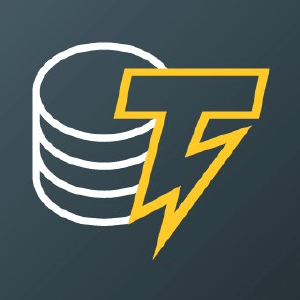Edge Computing Breakthrough: Anduril’s Klas Acquisition Powers Military AI
5 min read
In the fast-paced world of technology, advancements in areas like artificial intelligence and decentralized systems are constantly pushing boundaries. For those following the cryptocurrency and blockchain space, understanding the infrastructure that enables sophisticated, real-time data processing is key. This is where Edge Computing becomes critically important. Imagine systems that can process vast amounts of data instantly, right where it’s collected, without relying on distant data centers. This capability is essential for everything from autonomous vehicles to advanced AI applications, and it’s a field seeing significant development, particularly with companies like Anduril. Why Edge Computing is Critical for the Future Traditional computing relies heavily on centralized data centers. Devices collect data and send it to the cloud for processing. While effective for many tasks, this model has limitations, especially when speed and reliability are paramount. This is where Edge Computing steps in. Reduced Latency: Processing data closer to the source means less delay. This is vital for applications requiring immediate responses, such as autonomous systems or real-time sensor analysis. Increased Reliability: Edge devices can operate even when connectivity to central networks is limited or unavailable, making them ideal for remote or challenging environments. Lower Bandwidth Costs: Processing data locally reduces the amount of data that needs to be transmitted over networks, saving bandwidth and associated costs. Enhanced Security: Keeping sensitive data processed locally can reduce exposure compared to sending it across public networks to a central cloud. The challenge with Edge Computing is making powerful compute and networking equipment rugged, compact, and easy to deploy in non-traditional settings. This is a complex engineering task that few companies have mastered. The Strategic Importance of the Anduril Acquisition Anduril, a defense technology company, recently made a significant move to bolster its capabilities in this difficult area. On Monday, the company announced its ninth acquisition: Dublin-based Klas. Klas is known for manufacturing ruggedized Edge Computing equipment specifically designed for demanding environments, serving military and first responders. While financial details of the deal were not disclosed and it is subject to regulatory approval, Anduril confirmed that Klas employs 150 people. This acquisition is not a new partnership; Anduril was already a Klas customer, integrating Klas’s technology into its existing product lines. The purchase solidifies this relationship and brings Klas’s specialized expertise and proven hardware in-house, accelerating Anduril’s ability to deliver advanced edge solutions. Powering AI Edge Computing in Extreme Environments Klas’s flagship product line, known as Voyager, consists of ruggedized compute and networking systems. These systems are built to withstand harsh conditions, making them perfect for deployment in remote, off-grid, or inhospitable locations where traditional IT infrastructure is impossible. Anduril had already been utilizing Voyager systems within its Menace command center products. Furthermore, Klas’s Voyager technology was already integrated with Anduril’s core software platform, Lattice. Lattice is Anduril’s AI software that integrates data from various sensors and applies artificial intelligence, such as computer vision, to perform tasks like object identification and tracking. This existing integration means the Anduril Acquisition of Klas creates immediate synergy, allowing Anduril to tightly couple its advanced AI software with purpose-built, ruggedized hardware at the edge. Revolutionizing Military AI with Portable Power Alongside the Klas acquisition announcement, Anduril also unveiled a new product called Menace-T. This product embodies the goal of bringing powerful AI Edge Computing capabilities to the field in a highly portable format. Unlike traditional command systems that might require a large vehicle, Menace-T is designed to fit into just two carry-on cases. Anduril states that one person can set up the system in minutes. This portability is a game-changer for Military AI applications. It allows sophisticated computing and communication capabilities to be deployed rapidly wherever needed, supporting troops and equipment in dynamic operational environments. Anduril reports that Menace-T is already being used in military ground vehicles and maritime vessels, demonstrating its immediate utility in real-world scenarios. Achieving Real-time AI : The IVAS Example One prominent use case for Menace-T and the underlying Klas technology is supporting the military’s Integrated Visual Augmentation System (IVAS) VR headsets. The IVAS project, initially awarded to Microsoft in 2018 with a substantial budget, aimed to develop ruggedized HoloLens headsets for soldiers. However, the project encountered technical challenges over the years. Anduril took control of the troubled IVAS contract in February, with Microsoft remaining a cloud partner. Anduril had previously integrated its Lattice software into the IVAS headsets, enabling computer vision AI for object detection, tracking, and classification. Now, Anduril believes that Klas’s technology, which powers Menace-T, can address some of IVAS’s historical problems, particularly those related to reliable data processing and communication at the tactical edge. Tom Keane, Anduril’s SVP of Engineering, highlighted this connection, stating, “There are scenarios where those soldiers need to communicate with the tactical edge to send data, to receive data, to task autonomous systems, and that’s a place where the Klas technology can help.” He added that Klas had already been supplying technology to IVAS for several years in this context, indicating a natural progression for deeper integration and reliance on Klas’s capabilities to achieve truly Real-time AI performance for soldiers in the field. Beyond the Battlefield: Commercial Potential of Edge Computing While Anduril’s immediate focus is clearly on military, national security, and law enforcement applications, the underlying technology has significant potential far beyond these sectors. The ability to perform complex processing, including advanced computer vision and Real-time AI , directly at the point of data collection opens up numerous commercial possibilities that are currently impractical due to the limitations of traditional cloud computing or less robust edge hardware. Examples of potential commercial applications include: Automotive: Enabling more sophisticated on-board processing for autonomous driving, vehicle diagnostics, and safety systems. Industrial Automation: Powering AI-driven quality control, predictive maintenance, and robotics in manufacturing and industrial settings. Remote Monitoring: Deploying AI for environmental monitoring (like pollution detection), infrastructure inspection, or surveillance in areas with limited connectivity. Healthcare: Enabling real-time analysis of medical imaging or patient data at the point of care. Anduril has not ruled out pursuing these commercial avenues in the future. Tom Keane confirmed that the technology from Klas has many use cases across military, national security, law enforcement, autonomy, and more, and Anduril intends to support a wide array of customers and applications alongside its partners. The advancements made in meeting the stringent demands of Military AI could very well pave the way for robust, reliable Edge Computing solutions across numerous industries, impacting how data is processed and acted upon in real-time globally. In conclusion, Anduril’s acquisition of Klas is a strategic move that significantly enhances its capabilities in Edge Computing and AI Edge Computing . By bringing Klas’s ruggedized hardware expertise in-house, Anduril is better positioned to deliver powerful, portable, and reliable computing solutions essential for demanding applications like Military AI and the challenging IVAS project. This development underscores the growing importance of processing power at the edge and highlights the potential for these advancements to eventually influence a wide range of technological fields, including those relevant to the future of decentralized systems and real-time data applications that interest the Bitcoin World community. To learn more about the latest AI trends, explore our article on key developments shaping AI features.

Source: Bitcoin World



